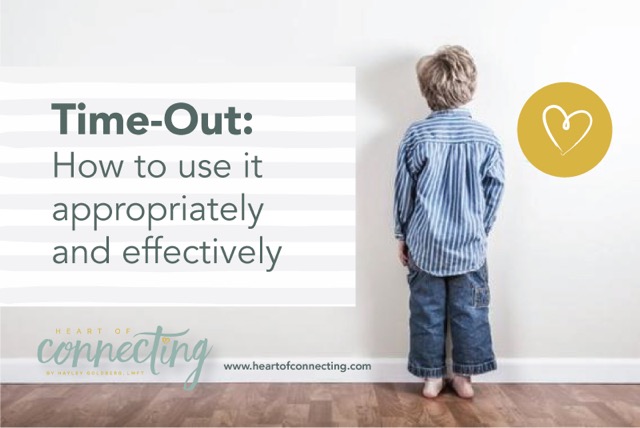
FREE PARENTING BREAKTHROUGH SESSION
I coach parents of toddlers and preschoolers to get clear about parenting and help you build a STRONG FAMILY with CALM, CONFIDENT PARENTS raising HAPPY KIDS who are PREPARED FOR SCHOOL and REAL LIFE.

When young children misbehave it is common practice for parents to send them to a time-out space, set a timer, and when the time is up allow them to come back and join the group. Many times, as children are resisting being sent to time-out, this can escalate into something much bigger, leaving parents with either a battle much harder than the original behavior warranted, or walking away from the situation exhausted and defeated.
Time-out was originally developed as a positive alternative to spanking or corporal punishment. It was designed to be time-out from positive reinforcement. It was never intended to become another form of punishment. As researcher’s have studied the punitive implementation of time-out, and as we are learning more about child development, it is clear that time-out has negative effects on children, and little learning comes from putting kids in time-out. Daniel Siegel, a researcher on brain development, shared his findings that, when presented negatively, time-out is registered in the brain the same way that physical harm is registered.
As more research and understanding comes out about child development we know that sending kids away to time-out when they are misbehaving, when we disconnect from them at a time of conflict, goes against what they really need when they are acting out, which is connection. Children in time-out are not thinking about what they did wrong. They are not quietly contemplating how they can fix their behavior and do better next time. Time-out does not change the behavior that got kids sent there in the first place, and it does nothing to teach children the skills they need to change behavior so they can do better moving forward. Time-out is a broken tool that does not get at the core of behavioral communication.
Behavior is communication. It is not random. All behavior is purposeful and has meaning. When we know what our children’s behavior is communicating we can respond to the root of the communication and address what is needed. There are three things behavior may be communicating: unmet needs, unlearned skills, or undeveloped self-regulation.
Unmet needs can be physical needs like kids being tired or hungry or they can be emotional needs where children need more connection or attention from those they love. Unlearned skills is a common theme for toddlers and preschoolers. Social skills are learned behaviors and if children have not learned certain skills we will see it in their behavior. Undeveloped self-regulation is natural and normal in young children. This is a skill that takes time for children to learn and develop.
For time-out to be a positive and effective parenting tool we need to be responsive to children and consider time -out as a time for coaching and meeting kid’s needs. Traditional time-out, thinking that children will figure it out while sitting alone is failed parenting from the past.
Effective time-outs follow these four steps:
Reinforce. Repeat. Redirect. If children go back out and do great with their behavior reinforce the new positive behavior they are engaging in. When children go back out and repeat the negative behavior, pull the child back out, excuse them from the situation and repeat the teaching of the new skill or spend more time with self-regulation before sending them out to try one more time. If children are still struggling after we repeat the teaching process they may need to be redirected to another activity for now. If they cannot be redirected, parents may need to end the current activity or leave the event or playdate. Continued misbehavior may be communicating, “I do not have the skills and this is just too hard right now.”
Childhood is a time for learning and making mistakes comes with learning. Our role as parents is not about having control over our children but rather to help children develop the skills they need to be happy and successful in life. Building these skills takes time, support, patience, and guidance. As children are growing and building skills remember that relationships matter. Parenting is more than getting children to behave better. Better behavior is contingent on the relationship we have with our children. Your parenting counts!
My work is dedicated to supporting parents and early childhood educators in understanding and reducing challenging behavior in young children at home and in the preschool classroom.